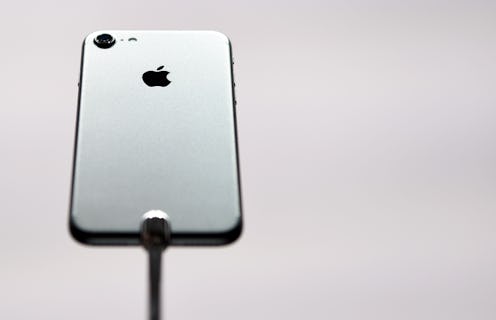At 1:00 p.m. ET on Sept. 13, I was thrilled to discover that iOS 10 was finally available for download according to the “Software Update” section of my iPhone’s “Settings” menu. However, both myself and many other iPhone users soon began to wonder why iOS 10 wasn’t installing. To be clear, it’s not that the update wasn’t downloading; however, there seemed to be some errors happening somewhere in the updating process, and ultimately, I ended up back with iOS 9.3.5. It’s not yet clear what might be going on, but Bustle has reached out to Apple for comment and will update this post if/when we hear back.
Update: A statement from Apple provided to Bustle said, "We experienced a brief issue with the software update process, affecting a small number of users during the first hour of availability. The problem was quickly resolved and we apologize to those customers. Anyone who was affected should connect to iTunes to complete the update or contact AppleCare for help."
Earlier: For the curious, here’s what happened to me: When the update became available, I started the download, and all seemed to be well for a period of time. It verified the download, completed the download, and began the installation process. After the installation progress bar reached its conclusion, my phone prompted me to plug it into iTunes, which I did. That’s when it started to get weird: A dialogue screen told me that something had failed and that I would either need to update my phone to iOS 9.3.5 — the previous version of the operating system — or reset my phone to factory settings.
I updated the phone to iOS 9.3.5, and at the end of the 45-minute period that passed while I was attempting the update, I ended up right where I started: with a functional phone running off of iOS 9.3.5.
So: What’s an eager iOS user to do? Troubleshooting isn’t always fun, but if you’re anything like me, it helps to at least try something. Here are a couple of things to try if you’re having trouble updating to iOS 10:
1. Free Up Some Storage Space
As Mac World points out, one of the strengths of the later iOS versions is that they don’t require as much free space to install as some of the earlier ones have. (iOS 8, for example, required a whopping 5 GB; the issue was later resolved with iOS 9.) However, you’ll still need enough free space to install the update. If you don’t, Apple’s support page suggests removing content on your device by going to “Settings,” then “General,” then “Software Update” and tapping “Usage Settings.”
2. Restart Your Phone
Did your device freeze while updating? It’s not an ideal solution, but you can force a restart by simultaneously pressing and holding the sleep/wake button (the one on the right side of your phone) and the Home button (the big button at the bottom of it) until you see the Apple logo appear. That’ll at least unfreeze it, which will allow you to try something else next.
3. Update Through iTunes
According to Computer World, you might have better luck updating your phone through iTunes, rather than just on its own. To do so, unplug any extraneous devices from your computer (external hard drives, USB sticks, whatever — anything that’s not your keyboard or mouse, if you have those), then restart both your computer and your iOS device. Once both have rebooted, open up iTunes and connect your iOS device to your computer. Then try updating directly from iTunes.
OSX Daily also notes that trying this option might help fix an “Unable to Activate” or “Activation server unavailable” issue, as well; connecting your device to iTunes might trigger the activation.
4. Connect To A Power Source
If you’re updating over the air, as opposed to through iTunes, you’ll need to make sure you have enough juice to do it. Apple Support suggests keeping your phone plugged into a power source while updating over air.
5. Remove The iOS Update And Try Again
Apple Support’s step-by-step instructions will help here: Go to “Settings,” then “General,” then “Storage and iCloud Usage.” From there, you should see “Manage Storage” as an option. Tap it, then tap the iOS update in the list of apps that appears, then tap “Delete Update.” Then you can go back to “Settings,” then “General,” then “Software Update” and try downloading the update again.
For what it’s worth, this last option worked for me. I now have iOS 10 installed on my phone, and everything is well with the world. Now if you’ll excuse me, I have some Bubble Effects to go send.
Images: Giphy (5)
